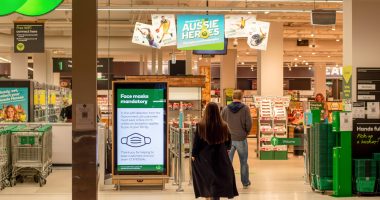- London and New York offer a glimpse of a possible post-pandemic roadmap for Australia’s largest cities, according to Savills CEO Paul Craig
- Mr Craig says fresh statistics reveal that overseas investors have continued to deploy capital in Australia, indicating ongoing trust in the local economy
- Australia’s vaccine rollout and likely easing of border restrictions will increase the pool of international buyers, Mr Craig says
- Another significant trend that is presently being reproduced in Australian office markets is the flight to quality
Tenant vaccination requirements, leasing patterns, mobility trends, investment activity and traffic movements, in both New York and London, provide clues into the Australian market’s future, according to Savills AU and NZ CEO Paul Craig.
“Savills and Metropolitan Transit Authority data shows public transport usage in Manhattan is up 76.7% since the beginning of the year and Manhattan mobility trends, from Apple, are up: with walking up 125% and driving up 123%,” he said.
“This has resulted in an increase in physical office occupancy. In addition, Savills research shows leasing activity in Manhattan was up 48.6% year-on-year to June 2021. Relocations and new leases accounted for 74.6% of activity, while renewals and expansions accounted for just 25.4%.
“The combination of increased physical occupancy and the reduction of sub-lease space are both excellent indicators for the two largest cities in Australia and give us a roadmap for the ‘new normal’.”
Despite Australia’s border restrictions, fresh statistics reveal that overseas investors have continued to deploy capital in Australia, indicating ongoing trust in the local economy, according to Mr Craig.
“The decisive return of Asia Pacific capital to Europe is good news for Australia,” he said. “Buyers from Hong Kong, China, Korea and Singapore are currently in Europe.”
“Australia’s vaccine rollout and likely easing of border restrictions will only increase the pool of international buyers looking to invest in Australia.”
According to Savills Australia national head office leasing Graham Postma, lockdown-affected Australian markets have followed similar patterns to foreign cities throughout the pandemic.
“Subsequently, as vaccine rates increased, from January 2021, Savills research shows 53.0% of sublease removals were backfilled by tenants opting to reoccupy their space instead of subleasing it,” he said.
“Additionally, subleasing activity increased to 23.9% of leasing activity, up from 11.4% in Q1, further compounding the declining sublet supply.
“Sydney and Melbourne have seen increases in sub-lease space – up four-fold in Sydney and six-fold in Melbourne since Jan 2020. This mirrors the New York experience.
“What we have subsequently seen in New York is that much of this sub-lease space has been withdrawn and reoccupied.”
Another significant trend that is presently being reproduced in Australian office markets is the flight to quality, which has been witnessed in both London and New York.
According to Mr Postma, two primary drivers are driving this trend, greater availability, alluring commercial terms and post-lockdown re-hiring requirements.







